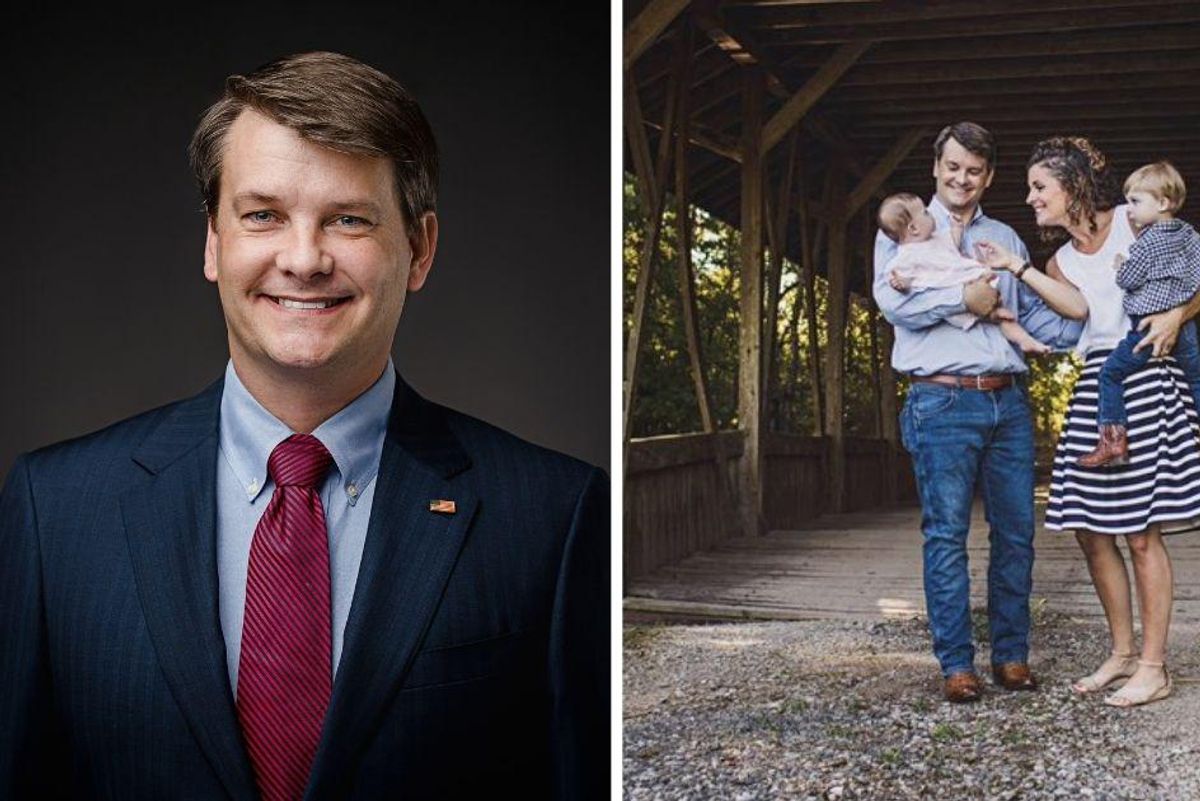
Luke Letlow was supposed to be sworn into Congress on January 3. Instead, his family will be mourning his passing.
Yesterday it was announced that the 41-year-old Congressman-elect from Louisiana's northeastern 5th District had died of complications from COVID-19. He had posted a tweet confirming his diagnosis on December 18th, saying he was "at home resting, following all CDC guidelines, quarantine protocols, and the recommendations of my doctors" and thanking everyone for their kind words and prayers.
Three days later, he was posting from the hospital. Two days after that, he was transferred to a different hospital and placed in the ICU. A statement posted on this Twitter account said that he was in stable condition and receiving Remdesivir and steroids—similar treatments that President Trump received when he was hospitalized with COVID-19.
Six days after that, he was gone. He is survived by his wife Julia, their 3-year-old son Jeremiah, and 9-month-old daughter Jacqueline.
From all indications, Letlow was a healthy 41-year-old. His doctor said Letlow had no underlying health conditions that would increase his risk of death from the virus, and the conditions that led to his death were "all COVID-related." He received the best known treatments for the disease, but when he suffered a heart attack following a procedure, there was nothing doctors could do.
"Luke had such a positive spirit, and a tremendously bright future ahead of him. He was looking forward to serving the people of Louisiana in Congress, and we were excited to welcome him to our delegation where he was ready to make an even greater impact on our state and our Nation," the Louisiana congressional delegation said in a statement.
According to NPR, House Speaker Nancy Pelosi said Letlow "fought passionately for his point of view and dedicated his life to public service."
"As the House grieves Congressman-elect Letlow's passing, our sorrow is compounded by the grief of so many other families who have also suffered lives cut short by this terrible virus. May it be a comfort to Luke's wife Julia and their children Jeremiah and Jacqueline that so many mourn their loss and are praying for them at this sad time," she added.
While we express our condolences to his loved ones who are undoubtedly in shock, we also must see this tragedy for the cautionary tale that it is. While he was not an outright COVID denier, Letlow hadn't consistently followed pandemic guidelines. Multiple photos have shown him gathered with others without masks or social distancing in the past couple of months, including at his own victory party after his run-off election win on December 5.
The risks of COVID-19 are a bit like Russian roulette. While statistically, the risks are higher for people in older age groups and people with compromised immune systems, stories like Letlow's happen. No one knows how their body is going to respond.
Looking just at the people in the government who have contracted the virus, there appears to be little rhyme or reason to the outcomes. President Trump, who is the higher risk category, ended up hospitalized but pulled through. Chris Christie was in the same boat. Senator Chuck Grassley is 87 years old and recovered from the virus seemingly without incident. And how this healthy 41-year-old dies 11 days after his diagnosis. It's a crapshoot in so many ways.
As we head into the new year, we face two starkly different truths: 1) We have an effective vaccine for this disease and largely know how to prevent its spread. That's wonderful news. And 2) We are set to lose another 100,000+ Americans to this disease just in the next couple of months. Truth number two is incredibly tragic, especially considering truth number one. We can see the finish line in the distance, but we keep putting obstacles in our own way that make it harder to get there quickly.
We can blame the incompetency of the government charged with protecting public health and getting vaccines rolled out and administered, and there are certainly valid criticisms to be placed there. But so much of our problem is wrapped up in our own behaviors. People refusing to social distance or wear masks. People fearing potential government overreach more than they fear an actual deadly virus. People devouring misinformation like candy and spewing it back out as if it's valid. People still not grasping how the virus spreads, despite months and months of epidemiologists and infectious disease specialists explaining it ad nauseum.
Will Luke Letlow's death be the wake-up call the U.S. needs to take this virus seriously and hold the line a little longer? Will his story inspire others to cancel that birthday party or avoid that New Year's Eve bash? Will younger, healthy Americans see themselves in this tale and take it as a warning, or will denial continue?
Who knows. But let's hope. That's really all we can do at this point.
- Nurses post startling examples of what being 'recovered' from ... ›
- We talked with the first American to get the COVID-19 vaccine and ... ›
- Man who has 'recovered' from COVID-19 explains how its impact ... ›

